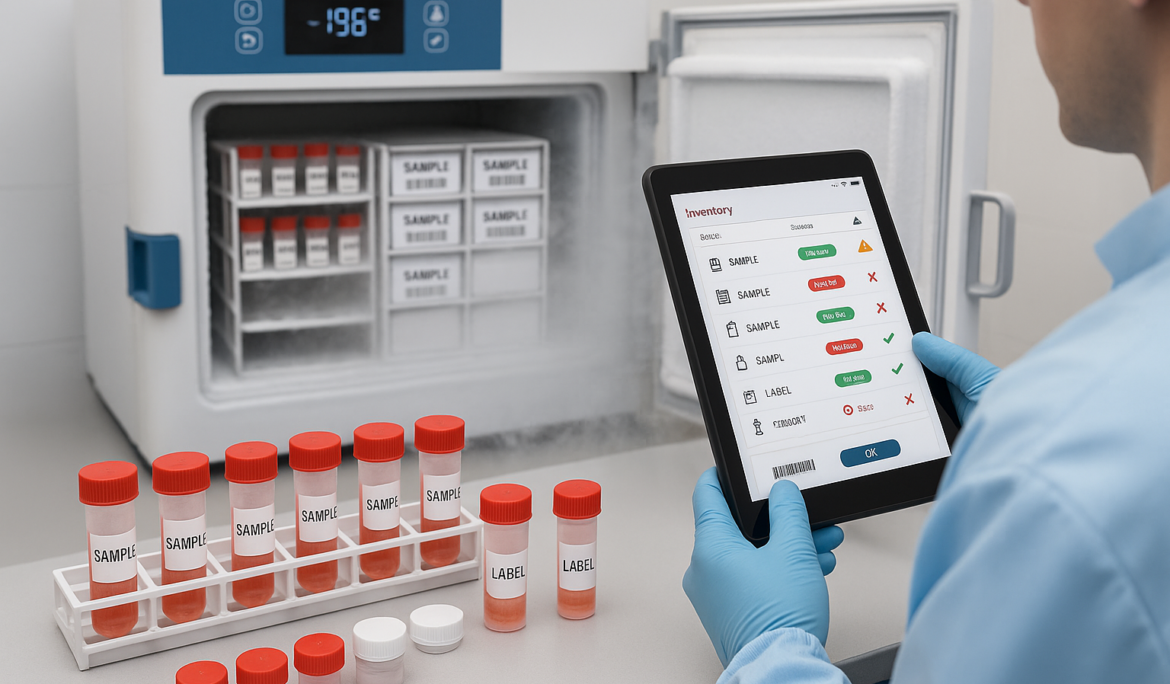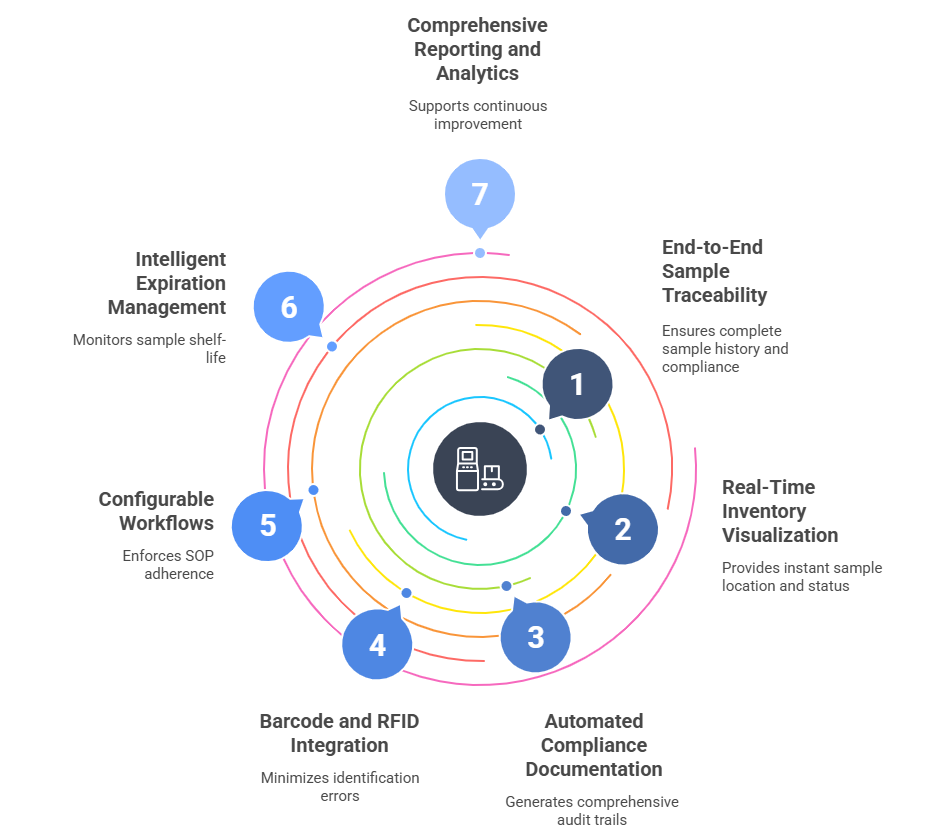7 Critical Ways Sample Inventory Management Systems Enhance Biological Sample Traceability and FDA Audit Readiness

In the highly regulated world of cell and gene therapy, maintaining impeccable sample traceability and audit readiness isn’t just good practice – it’s essential for patient safety, regulatory compliance, and therapeutic success. As biological samples become increasingly valuable and personalized therapies more common, the stakes for error-free inventory management have never been higher.
The Growing Challenges of Biological Sample Management
According to recent industry data, specimen loss rates hover around 0.002%, which may seem small until you realize this translates to thousands of mishandled samples monthly across healthcare systems. Each lost sample represents not just a logistical failure, but potentially a critical delay in patient treatment, compromised research integrity, or even a failed clinical trial.
The implications are particularly severe in cell and gene therapy contexts, where:
- Samples are often irreplaceable and patient-specific
- Chain of Identity (COI) and Chain of Custody (COC) must be maintained without exception
- FDA and other regulatory bodies require complete documentation and traceability
- GMP compliance demands consistent, validated processes for sample handling

Let’s see seven crucial ways modern storage inventory systems like PragLife are transforming biological sample management while simultaneously strengthening audit readiness.
1. End-to-End Sample Traceability Through Integrated COI and COC
Traditional sample management often creates documentation silos that make complete traceability challenging. Advanced storage inventory systems address this by implementing unbroken digital chains of identity and custody.
These systems maintain continuous documentation of:
- Sample origin and patient linkage
- Every handling event and personnel involved
- Temperature and environmental conditions
- Processing steps and timeline adherence
- Final disposition or use
This comprehensive approach ensures that any sample’s complete history can be retrieved instantly, satisfying both operational needs and regulatory requirements under 21 CFR Part 11 and similar standards.
2. Real-Time Inventory Visualization and Location Management
One of the most common challenges in biological sample management is simply knowing exactly what you have and where it’s stored. Modern storage inventory systems employ intuitive visual interfaces that mirror physical storage infrastructure.
These visualization tools allow teams to:
- Navigate complex freezer hierarchies with ease
- Instantly locate any sample within a storage ecosystem
- View occupancy rates and available storage space
- Plan efficient sample organization and retrieval
- Prevent unnecessary freezer door openings that compromise sample integrity
This visual approach not only improves operational efficiency but creates clear, auditable records of sample locations and movements – a frequent focus during FDA inspections.
3. Automated Compliance Documentation and Audit Trails
GMP environments demand meticulous documentation of every action affecting sample integrity. Storage inventory systems automate this process through comprehensive audit trails that document:
- Who accessed or modified sample information
- When changes occurred (with time-stamped records)
- What specific actions were taken
- Why changes were implemented (with reason codes)
- How the system was configured at each point in time
These automated records eliminate the documentation gaps that often trigger regulatory findings. When FDA auditors request evidence of proper sample handling, these systems provide complete, tamper-evident records without the frantic paper chase that characterizes many audits.
4. Barcode and RFID Integration for Error-Free Identification
Human error in sample identification represents one of the highest risk points in biological material handling. Advanced inventory systems mitigate this risk through seamless integration with barcode and RFID technologies.
This integration enables:
- Positive sample identification through scan verification
- Automated data entry that eliminates transcription errors
- Batch processing of multiple samples with accuracy
- Reconciliation processes that identify discrepancies
- Error detection at the point of action rather than discovery
By removing manual identification steps, these systems dramatically reduce error rates while creating verifiable digital records that demonstrate proper identification procedures during audits.
5. Configurable Workflows That Enforce SOPs
Standard Operating Procedures (SOPs) are the backbone of GMP operations, but ensuring consistent adherence can be challenging. Modern storage inventory systems incorporate configurable workflows that:
- Enforce procedural compliance by guiding users through required steps
- Prevent unauthorized deviations from established protocols
- Document exceptions with appropriate approval processes
- Adapt to evolving regulatory requirements without costly reprogramming
- Maintain version control of SOPs with clear implementation dates
These structured workflows ensure that samples are consistently handled according to validated procedures – a critical factor in both maintaining sample integrity and demonstrating GMP compliance during regulatory inspections.
6. Intelligent Expiration and Status Management
Biological samples often have defined shelf-lives or viability periods that must be strictly observed. Storage inventory systems provide automated monitoring of:
- Expiration dates with configurable notification thresholds
- Quality status changes that affect sample usability
- Freeze-thaw cycles that impact sample integrity
- Quarantine status for samples pending QC review
- Review and release workflows for clinical use
These capabilities ensure that only appropriate samples are used in manufacturing or patient treatment while providing clear documentation of status management processes that satisfy regulatory requirements.
7. Comprehensive Reporting and Analytics for Continuous Improvement
Beyond day-to-day operations, advanced storage inventory systems offer robust reporting and analytics capabilities that support both operational excellence and audit readiness:
- Customizable reports that align with regulatory submission formats
- Trend analysis to identify potential process improvements
- Capacity planning to prevent storage constraints
- Quality metrics that highlight potential compliance risks
- Deviation tracking with root cause categorization
These analytical capabilities transform storage management from a reactive necessity to a proactive quality system that supports continuous improvement while maintaining comprehensive documentation for regulatory reviews.
Real-World Impact on Audit Outcomes
Organizations implementing comprehensive storage inventory systems consistently report significant improvements in audit outcomes, including:
- Reduction in audit findings related to sample traceability
- Decreased time and resource requirements for audit preparation
- Faster response to auditor requests for documentation
- Improved confidence among quality and regulatory teams
- Enhanced ability to demonstrate procedural adherence
Perhaps most importantly, these systems shift the focus from audit survival to process excellence – creating an environment where compliance becomes a natural outcome of effective operations rather than a separate, burdensome activity.
Conclusion: Beyond Compliance to Operational Excellence
While regulatory compliance and audit readiness are essential, the true value of advanced storage inventory systems extends far beyond these requirements. By implementing these systems, life sciences organizations create operational foundations that support innovation, reduce errors, and ultimately enable more effective development and delivery of life-changing therapies.
As cell and gene therapies continue their rapid evolution, the organizations that thrive will be those that view sample management not merely as a compliance necessity but as a strategic capability that enables therapeutic advances while maintaining the highest standards of quality and safety.
Looking to enhance your organization’s biological sample traceability and audit readiness? Discover how PragLife’s Storage Inventory System can transform your operations while ensuring FDA and GMP compliance. Contact us today to learn more about our tailored solutions for life sciences organizations.



